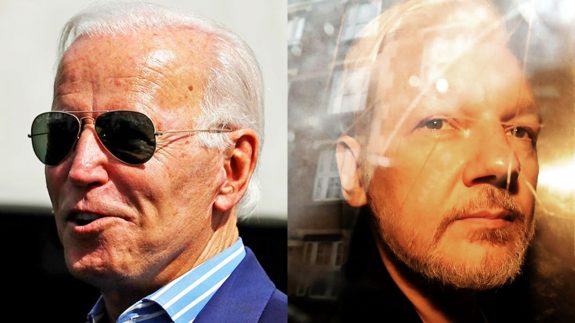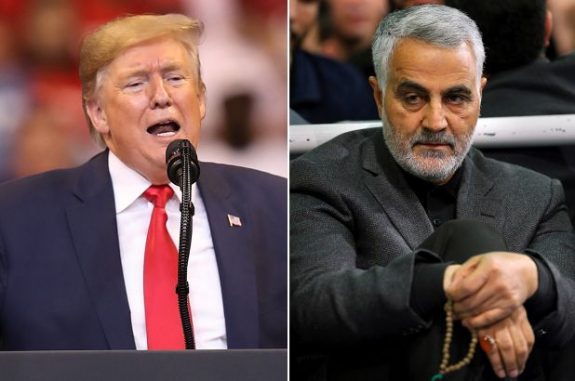Continuing Prosecutions: Assange and the Biden Administration

With changes of presidential administrations, radical departures in policy are always exaggerated. Continuity remains, for the most part, a standard feature. It is precisely that continuity being challenged by groups fearful of the continuing prosecution of Julian Assange.
The effort by the US Justice Department to extradite Assange from the UK on eighteen charges based on the Espionage Act and the Computer Fraud and Abuse Act met a stumbling block in the courts on January 4 this year. The decision by District Judge Vanessa Baraitser proved exceedingly unsympathetic to the press and to Assange in general, but found his “the mental condition … such that it would be oppressive to extradite him to the United States of America.”
Undeterred, the Justice Department promised to appeal (the February 12 deadline looms), while President Donald Trump showed little interest in dropping the case or using his pardoning powers. With the Biden administration still finding its feet, advocacy groups have gathered to press for the dropping of the case against the founder of WikiLeaks. On February 9, the Freedom of the Press Foundation sent a letter to President Joe Biden making the case. Signatories included Amnesty International, Human Rights Watch, the ACLU, the Knight First Amendment Institute, the Committee to Protect Journalists and Reporters Without Borders.
“While our organizations have different perspectives on Mr Assange and his organization,” states the letter, “we share the view that the government’s indictment of him poses a grave threat to press freedom both in the United States and abroad.” The letter distils the implications of the continued prosecution to model simplicity. The indictment is a threat to press freedom given that it covers the sort of conduct “journalists engage in routinely – and that they must engage in in order to do the work the public needs them to do.” Journalism entails speaking with sources, seeking clarification or further documentation and receiving and publishing documents “the government considers secret.”
Biden is weakly kitted out in the garb of a press defender, having positioned himself against Trump’s designation of the fourth estate as “the Enemy of the People.” In May last year, he promised that a Biden White House would ensure that there was “no bullying of the media from the press room podium or by tweet.” But for a good stretch of the presidential campaign, Biden tended to ignore the press, part of a general strategy to avoid his famed bumbling. For three months he did not hold a single news conference, even in virtual format.
Biden was also Vice President in an administration that preached mightily about the values of the press while regularly resorting to the Espionage Act in prosecuting journalistic sources and whistleblowers. Parker Higgins of the Freedom of the Press Foundation even argues that the Obama administration created a model Trump would grasp with glee, one characterised by the Espionage Act, efforts to “eviscerate reporter’s privilege,” the use of surveillance and the “abuse of the classification system”.
The new president does not count himself among Assange’s fans. In the aftermath of the publication of US State Department cables by WikiLeaks in 2010, Biden went so far as to call the publisher a “high-tech terrorist”, a position almost intemperate relative to other White House officials. The point is worth reiterating, given the Obama administration’s general reluctance to prosecute either Assange or WikiLeaks given the proximity of their activities to journalism. In 2013, Obama’s officials fell back on precedent, sparing WikiLeaks, and by virtue of that other press outlets, from legal action.
In that unfortunate interview on NBC’s Meet the Press, an irony that eluded him at the time, the then Vice President revealed that the Justice Department was “taking a look” at possible charges. If conspiracy could be proven behind obtaining “these classified documents with a member of the US military that is fundamentally different than if someone drops on your lap … if you are a press person, here is classified material.”
Biden also threw cold water on any claims that the publications had been anything like the Pentagon Papers released during the Nixon administration. Assange had “done things that have damaged and put in jeopardy the lives and occupations of people in other parts of the world.” There was also a complaint that meeting world leaders had become more onerous. “For example, in my meetings … there is a desire to meet with me alone, rather than have staff in the room. It makes things more cumbersome – so it has done damage.”
Such reasoning has been essentially duplicated in the current indictment, despite a paucity of evidence as to what actual harm the disclosures are said to have caused. Daniel Ellsberg, the man behind the release of the Pentagon Papers, told the court in Assange’s extradition trial that US authorities had “not been able to identify a single person at risk of death, incarceration or physical harm.”
Given Biden’s previous form on the subject, it is hardly surprising that his administration is promising to continue the prosecution. On February 9, Justice Department spokesman Marc Raimondi revealed that there would be no change of tack in pursuing Assange. “We continue to seek his extradition.” The new is looking awfully like the old on this point.
Like what we do at The AIMN?
You’ll like it even more knowing that your donation will help us to keep up the good fight.
Chuck in a few bucks and see just how far it goes!
Your contribution to help with the running costs of this site will be gratefully accepted.
You can donate through PayPal or credit card via the button below, or donate via bank transfer: BSB: 062500; A/c no: 10495969










